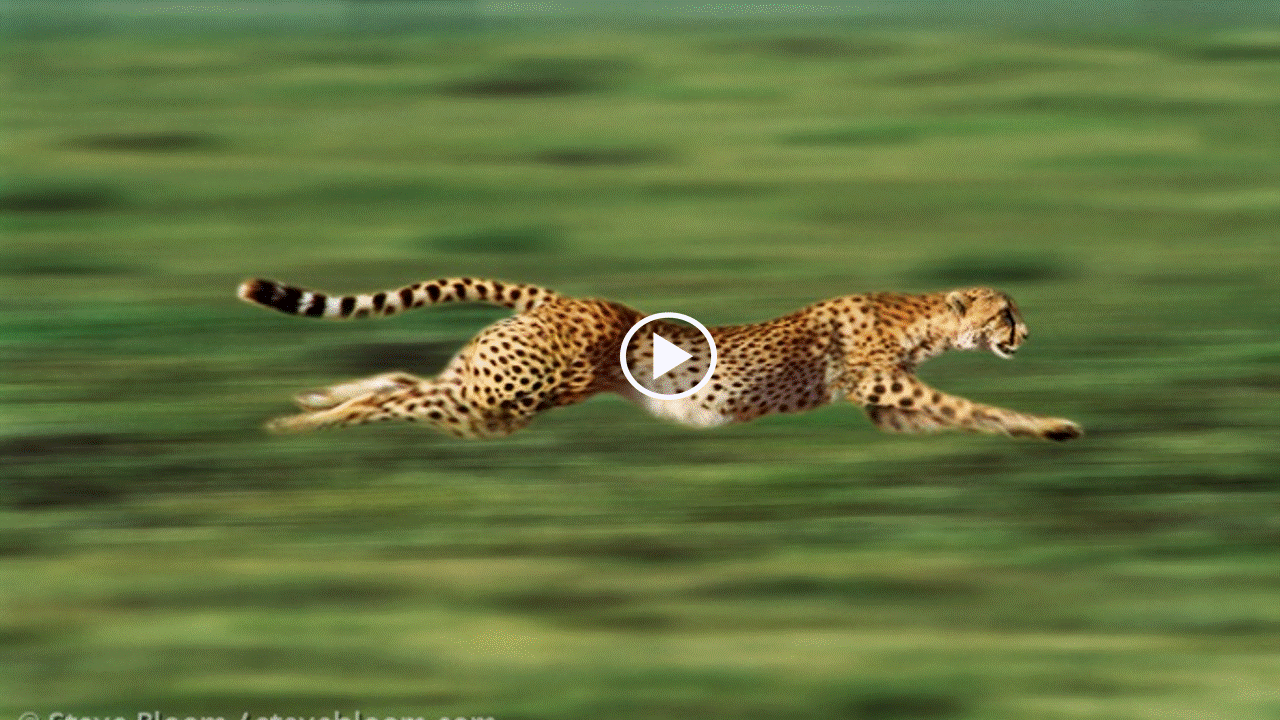The Fascinating World Of The Fastest Animal
Speed is a remarkable attribute in the animal kingdom, captivating our imagination and igniting our curiosity. Among the myriad of creatures that roam our planet, some stand out for their incredible velocity, leaving us in awe of nature's design. The title of "fastest animal" is not merely a label; it is a testament to the extraordinary adaptations and evolutionary traits that certain species possess. This article delves into the world of these speedsters, exploring their habitats, behaviors, and the science behind their impressive agility.
Understanding the fastest animal requires us to look beyond just raw speed. It involves analyzing how these creatures have adapted to their environments, honed their hunting skills, and developed physical attributes that allow them to reach such astonishing velocities. From the skies to the oceans and across the land, each animal's speed plays a crucial role in its survival and success in the wild.
As we embark on this exploration, we will address questions that arise about these remarkable beings. How do they achieve such speeds? What are the implications of their velocity in their ecosystems? And which creatures reign supreme in their respective domains? Join us as we uncover the secrets of the fastest animals on Earth.
What Defines the Fastest Animal?
When we talk about the fastest animal, we must first define what speed means in this context. Speed can be measured in various ways depending on the environment and the criteria used. For instance, the fastest animal in the air, the Peregrine Falcon, achieves remarkable speeds during its hunting stoop. In contrast, the cheetah holds the title for the fastest land animal, capable of explosive acceleration. Additionally, the black marlin is considered the fastest in the water, showcasing the diversity of speed across different species.
How Fast Can Animals Actually Go?
The speed of the fastest animals can be astonishing. Here are some of the top contenders for the title of the fastest animal:
- Peregrine Falcon: Can reach speeds of over 240 mph (386 km/h) during a dive.
- Cheetah: Can run at speeds up to 75 mph (120 km/h) in short bursts covering distances up to 1,500 feet.
- Black Marlin: Can swim at speeds of 82 mph (132 km/h).
- Mexican Free-tailed Bat: Has been recorded flying at speeds of 99 mph (160 km/h).
What Adaptations Allow These Animals to Achieve Such Speed?
The adaptations that enable these animals to reach such high speeds are fascinating and varied. Some key adaptations include:
- Body Structure: Streamlined bodies reduce air resistance and drag.
- Muscle Composition: Fast-twitch muscle fibers allow for quick bursts of speed.
- Respiratory and Cardiovascular Efficiency: Enhanced oxygen intake and circulation support high-energy activities.
- Behavioral Strategies: Hunting techniques and social structures that maximize speed advantages.
Where Do the Fastest Animals Live?
The habitats of the fastest animals vary widely, from the open skies to dense forests and vast oceans. The Peregrine Falcon thrives in urban environments and cliffs, while the cheetah roams the grasslands of Africa. The black marlin is found in tropical and subtropical waters, showcasing the adaptability of these speedsters in diverse ecosystems.
How Do Fast Animals Impact Their Ecosystems?
The presence of the fastest animals in their ecosystems plays a vital role in maintaining balance. As apex predators, they help control prey populations, which in turn affects plant life and overall biodiversity. For instance, the cheetah's hunting strategy not only influences the population dynamics of antelopes but also shapes the behavior of other predators in the region.
Are There Threats to the Fastest Animals?
Despite their impressive adaptations, many of the fastest animals face significant threats, including:
- Habitat Loss: Urbanization and agricultural expansion encroach on their natural habitats.
- Climate Change: Alters ecosystems, affecting food availability and breeding patterns.
- Human Interference: Hunting, poaching, and pollution pose direct dangers to their survival.
What Can We Do to Protect the Fastest Animals?
Protecting the fastest animals requires a concerted effort from individuals, communities, and governments. Here are some steps we can take:
- Support Conservation Efforts: Contribute to organizations focused on habitat preservation and species protection.
- Raise Awareness: Educate others about the importance of these animals and the threats they face.
- Advocate for Sustainable Practices: Promote policies that protect natural habitats and reduce pollution.
Conclusion: Embracing the Speed of Nature
The fastest animals are not just remarkable for their speed; they are vital components of their ecosystems, serving as indicators of environmental health and biodiversity. By understanding and appreciating these incredible creatures, we can work towards ensuring their survival for future generations. As we continue to explore the wonders of nature, let us remember the importance of protecting our planet's fastest animals, allowing them to thrive in their natural habitats.
In summary, the fascination with the fastest animal goes beyond mere speed; it encompasses the rich tapestry of life on Earth and the intricate relationships that bind us all together. By celebrating and safeguarding these magnificent creatures, we honor the beauty of our natural world.
Unveiling Jim Acosta's Net Worth: A Journey Through His Career
Unleashing Creativity: The World Of Alter Ego Names For Males
Celebrating New Beginnings: Happy Birthday To A New Mom Quotes



